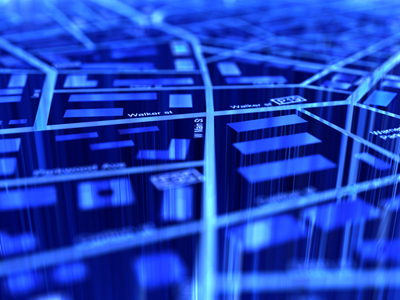
Ask the AI Tutor
Need help with Geographical Information Systems? Ask our AI Tutor!
AI Tutor - Lucy
Connecting with Tutor...
Please wait while we establish connection

How much do you know about geographic information systems?
Geographical Information Systems
GCSE Geography now uses digital tools like GIS. This quiz explores how maps, data and technology combine to help geographers investigate places and solve real-world problems.
1 .
GIS stands for ...
Geodesic Information Series
Geodesic Information System
Geographical Information System
Geographical Information Satellite
You will also see it written as 'geographic information system'
2 .
A GIS can be used for ...
analysing geographical information
capturing geographical information
displaying geographical information
All of the above
It is also used for managing geographical data too
3 .
Which of the following is not a use of a GIS?
Construction and urban design
Navigating using a map and compass
Crime and surveillance
GPS mapping
Navigating using a map and compass does not involve a computer, software or digital map
4 .
How is the data displayed on a map by a GIS?
Using a pencil
As a single image
As a series of layers
As numbers
The different layers can be switched on and off to help the user to spot patterns
5 .
Which of the following is not an advantage of using a GIS?
It is faster than traditional analysis methods
It does not work during a power cut
It can include a lot of data on one map
It improves communication
A GIS contains many different ways to present the data and can present complex information in a visual and easy-to-understand way
6 .
Which of the following is not an essential part of a GIS?
A smartphone
Computer hardware
A digital map
A geographical database
You could access and use a GIS via a smartphone but it is not essential. Whatever you use to access the GIS, you need the software to link the database information to the map
7 .
A GIS reveals ...
relationships between data sets
patterns in data sets
trends in data sets
All of the above
A GIS is a powerful set of computerised tools that enables the user to view, understand, question, interpret, and visualise data in many ways
8 .
Which of the following data would you be least likely to obtain from a GIS?
The area of a parish
The population of a village
The services available in a town
The names and addresses of all the vicars in Cambridgeshire
A GIS contains geographical data. Some of this will be relevant to human geography but will not identify individual people other than perhaps the owners of local businesses when the data was collected
9 .
The data for a GIS is usually stored in ...
a rich text file
a cupboard
a database
a cardboard box
Different systems can use different files but data is usually stored in databases or spreadsheets
10 .
There is a lot of geographical data contained in an atlas so why would you use a GIS instead?
To save having to have somewhere to keep an atlas
It takes up more room
The pages of the atlas could get accidentally ripped and lost
It is easier to add more data to maps
In an atlas, each map contains only a limited amount of data, it is not easy for you to add or remove other data but with a GIS it is usually as simple as making a few clicks with a mouse (or taps on a screen). But that's only one advantage, for the exam, make sure you know some others too
**Unlimited Quizzes Await You! 🚀**
Hey there, quiz champ! 🌟 You've already tackled today's free questions.
Ready for more?
Ready for more?
🔓 Unlock UNLIMITED Quizzes and challenge yourself every day. But that's
not all...
not all...
🔥 As a Subscriber you can join our thrilling "Daily Streak" against other
quizzers. Try to win a coveted spot on our Hall of Fame Page.
quizzers. Try to win a coveted spot on our Hall of Fame Page.
Don't miss out! Join us now and keep the fun rolling. 🎉
**Unlimited Quizzes Await You! 🚀**
Hey there, quiz champ! 🌟 You've already tackled today's free questions. Ready for more?
🔓 Unlock UNLIMITED Quizzes and challenge yourself every day. But that's not all...
🔥 As a Subscriber you can join our thrilling "Daily Streak" against other quizzers. Try to win a coveted spot on our Hall of Fame Page.
Don't miss out! Join us now and keep the fun rolling. 🎉






